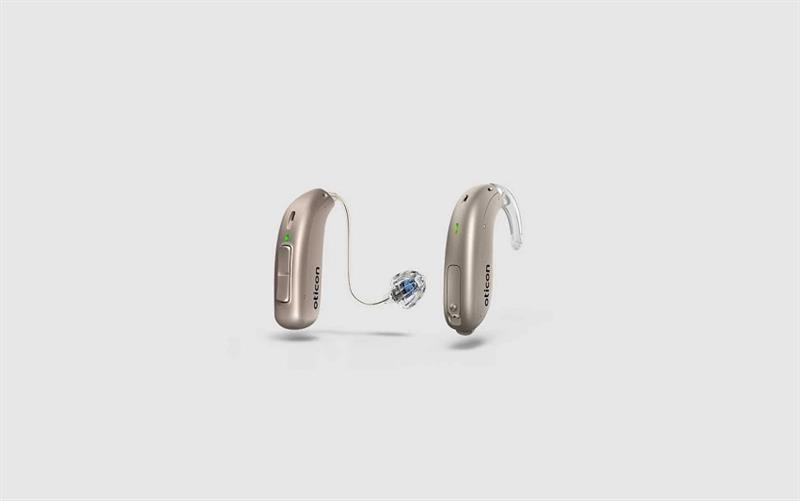
Finding the "best" device overall is not the goal when deciding between a BTE and a RIC; rather, the goal is to discover the best device for you.
The best option for you will rely on your lifestyle, comfort requirements, and degree of hearing loss. Both designs have incredible advantages.
For people who have medium to severe hearing loss and desire a discreet, lightweight solution with a highly natural sound quality, RIC hearing aids are perfect. Seniors with more severe hearing loss or poor dexterity, on the other hand, would benefit greatly from BTE hearing aids because they provide maximum power, longevity, and ease of use.
Selecting the best hearing aid is a huge decision, especially for seniors who want a device that supports their lifestyle and is comfortable, manageable, and strong enough.
Behind-the-Ear (BTE) and Receiver-in-Canal (RIC) hearing aids are two of the most often used varieties.
Although they both have excellent attributes, their purposes are distinct.
RIC (Receiver-in-Canal):
In this style, the main body of the hearing aid sits discreetly behind the ear, and a thin wire connects it to a small speaker (the "receiver") that sits inside the ear canal.
Key Features:
1. Discreet Design
- RIC hearing aids are known for being very small and subtle.
- The main part of the device — containing the microphone and amplifier — sits comfortably behind the ear, while a thin, barely noticeable wire runs into the ear canal.
- This design makes the hearing aid almost invisible to others, which is a big plus for seniors who want to maintain a natural appearance without drawing attention to their devices.
2. Clearer, More Natural Sound Quality
One of the biggest advantages of RIC hearing aids is their superior sound experience. Because the speaker (receiver) sits directly inside the ear canal — closer to the eardrum — the sound doesn't have to travel far, and there’s less distortion.
Benefits include:
- More natural, crisp sound
- Better spatial awareness (helps you tell where sounds are coming from)
- Improved performance in noisy environments
3. Lightweight and Comfortable for All-Day Wear
RIC hearing aids are designed to be very lightweight. Since the receiver is placed in the ear and only a small piece rests behind the ear, there’s less bulk compared to other styles.
This means:
- They feel less heavy or noticeable after long periods.
- They fit comfortably even if you wear glasses or oxygen tubing.
- There’s less risk of skin irritation around the ear.
4. Flexible for a Wide Range of Hearing Loss
- RIC hearing aids can be adapted for mild, moderate, or even severe hearing loss.
- Different receiver strengths can be used depending on the patient’s needs, allowing for flexibility without needing a whole new device if hearing changes over time.
Why it matters:
Hearing loss often progresses slowly. Having a device that can "grow with you" saves money and reduces the hassle of frequent upgrades.
5. Easy Maintenance and Repairs
While RIC hearing aids are slightly more delicate than other styles (because the receiver is inside the ear canal), many models allow you to replace the receiver separately if it’s damaged or blocked with earwax — without replacing the whole hearing aid.
This offers
- Lower repair costs
- Quick fixes without sending the device away for weeks
- Fewer disruptions in hearing aid use
BTE (Behind-the-Ear):
In this style, the entire hearing aid (microphone, amplifier, and speaker) is housed in a case that rests behind the ear. A tube connects the device to a custom earpiece or dome that fits inside the outer ear.
Key Features of BTE Hearing Aids:
1. Powerful Performance for All Levels of Hearing Loss
BTE hearing aids are known for their strong amplification power. Because the entire mechanism — microphone, amplifier, and speaker — is housed behind the ear, these devices can deliver higher sound output compared to smaller styles like RIC.
This makes BTEs ideal for:
- Mild to profound hearing loss
- Those who need clear sound even in very noisy environments
- People whose hearing may worsen over time and need a device that can handle it
2. Exceptional Durability and Longer Lifespan
BTE hearing aids are built to be strong and sturdy. Since they don’t have delicate components like an in-ear receiver (as RICs do), BTEs tend to resist:
- Moisture (like sweat)
- Dust
- Earwax buildup
They also have larger casings, making them less prone to damage from drops or daily wear-and-tear.
3. Larger Size Means Easier Handling
The bigger body of a BTE hearing aid isn’t just about durability — it also makes the device much easier to handle.
Benefits include:
- Easier to insert and remove
- Simpler to change batteries or manage controls
- Buttons and switches are more tactile and visible
4. Bigger Batteries for Longer Use
Thanks to their larger design, BTE hearing aids can house bigger batteries — which generally means:
- Longer battery life (fewer changes or recharges)
- Stronger output without draining quickly
- Compatibility with rechargeable battery systems
Some BTE models even offer advanced rechargeable options, allowing a full day of use from just a few hours of charging.
5. Highly Customizable for a Perfect Fit
BTE hearing aids are typically fitted with custom earmolds or standard domes, depending on the wearer’s needs.
This customization means:
- Better comfort tailored to your ear’s unique shape
- A snug, secure fit that stays in place during activity
- Improved sound sealing, reducing feedback (that annoying whistling sound)
It's ideal to keep yourself as educated with your hearing aids and a new breakthrough in the technology. Ask your query via Book an Appointment today. For more information visit https://hearing.careinc.ca or you can call us today at (403)605-6300